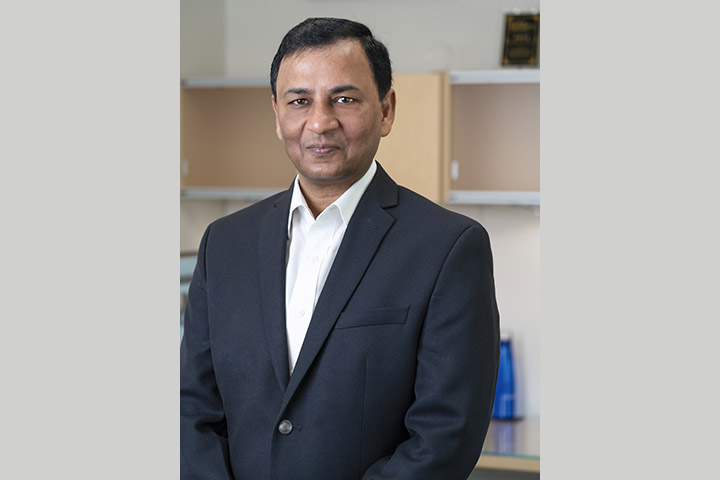PATHFINDER Blood Test Trial Focused on Early Detection

Within about the last ten years, there has been significant research into the so-called “liquid biopsy.”
In simplest terms, a liquid biopsy allows scientists to analyze biomarkers—substances that indicate the presence of a disease—in fluids like blood and urine. The great hope in the oncology community is that these liquid biopsies will find cancer in its earliest, most treatable stage. Unlike a traditional biopsy that uses tissue samples from an organ like the breast or the pancreas, the liquid biopsy involves a blood draw, the same kind you might get for your yearly physical. Having a test like this—patient-friendly and easily performed—would be an incredible boon to individuals with cancer and the doctors who treat them.
A new study called PATHFINDER hopes to get the new blood test that can detect multiple cancers early into the arsenal of tools available to physicians. PATHFINDER is a prospective clinical trial supported by the biotech company GRAIL, Inc. of Menlo Park, California, which developed a novel multi-cancer early detection test as part of its preceding Circulating Cell-Free Genome Atlas (CCGA) Study. That earlier research has resulted in some very hopeful findings.
“As a physician-scientist, the possibility of a blood-based test for multi-cancer detection appeals to me on multiple levels,” says medical oncologist Minetta Liu, M.D., Professor and Research Chair in the Department of Oncology at the Mayo Clinic, Rochester, Minnesota. Liu is co-lead author for the CCGA Study-related publication in the June 2020 Annals of Oncology. The study, involving thousands of participants, showed that the GRAIL-developed blood test is able to detect cancer signals in the blood of patients with one of over 50 types of cancer. Importantly, the blood test also provides information on the tumor origin in the body with a high degree of accuracy.
“Breast cancer has a screening paradigm, mammography, which has demonstrated clinical utility, but it is not perfect. Pancreatic cancer is at the other end of the spectrum because it lacks universal screening and is often diagnosed later, when surgery is not an option,” says Liu. “It makes sense that early detection has the potential to improve patient outcomes. We need better tools to identify malignancies at the earliest possible stage.”
“Treatment of localized cancer includes surgery and considerations for radiation and medical therapy, which includes chemotherapy. If a cancer is diagnosed early enough, surgery alone may suffice. As a medical oncologist, I hope to minimize the use of chemotherapy and other systemic agents, all of which are associated with some level of toxicity.”
Early Work on Biomarkers Shows Promise
In the CCGA Study supported by GRAIL, researchers collected blood samples to analyze cell-free DNA, which is DNA from normal and cancerous cells that enters the bloodstream after the death of the cell. The report published in the Annals of Oncology describes development of a blood test for multi-cancer detection and represents analyses of blood samples from 6,689 participants (2,482 diagnosed with cancer and 4,207 without cancer).
The participants represented more than 50 cancer types, including very aggressive, tough-to-treat malignancies such as pancreatic cancer. Other cancers included breast, colorectal, esophageal, gallbladder, bladder, gastric, ovarian, head and neck, and lung cancer; lymphoid leukemia; multiple myeloma; and others.
For any screening to be effective, it must have a high degree of sensitivity and specificity. Sensitivity means the test is able to correctly identify a disease like cancer. Specificity means the test can correctly identify those without the disease.
The overall specificity of the GRAIL test was 99.3 percent. That means that only 0.7 percent of the results incorrectly indicated that cancer was present. The sensitivity of the test for 12 cancers that comprise about two-thirds of cancer- related deaths in the U.S. was 67.3 percent. That means the test could find cancer about two-thirds of the time, and that a cancer signal was absent in the blood about one-third of the time.
For the 12 cancers accounting for high mortality, the sensitivity was 39 percent for patients with stage I cancer, 69 percent for those with stage II, 83 percent for those with stage III, and 92 percent for those with stage IV disease. Increasing detection with increasing tumor burden, as represented by stage of disease, is expected. Across all 50 cancer types the sensitivity for stages I through III was 43.9 percent.
What is specifically critical for doctors like Liu is that when cancer was detected, the test correctly identified the organ or tissue where the cancer originated in more than 90 percent of cases. “Having a multi-cancer blood test that detects a general signal AND indicates the primary tumor site with relatively high certainty is critical in directing the appropriate work-up for confirmation of a cancer diagnosis. No one wants to subject patients to unnecessary testing.”
It should be noted that a multi-cancer early detection test detects and localizes small amounts of circulating tumor signal in the blood, while a liquid biopsy investigates tumors in patients with a known cancer diagnosis. Multi-cancer early detection presents a significant complex and technical challenge, requiring much larger study sizes compared to liquid biopsy and population scale datasets in order to develop the machine learning algorithms necessary for a test to be used in a real-world setting, according to GRAIL.
Looking for Patterns
Multiple DNA sequencing techniques were evaluated as part of CCGA. The method ultimately selected to move forward as the GRAIL test uses sophisticated sequencing techniques to determine the patterns of a specific chemical unit dubbed methyl groups. Methyl groups are located on specific sections on DNA. Their job is to control genes by turning them on or off. When a cell is normal and non-malignant, these methyl groups form a recognizable pattern telling researchers all is well with that cell. However, if a cell is cancerous, for example, the pattern of methyl groups is different.
The so-called DNA methylation process has been the subject of much research, and it has been implicated in several disease processes, including the development and progression of cancer. Methylation patterns provide complementary information to DNA mutations in the setting of malignancy. According to Liu, “The fact that methylation patterns are similar between tumor tissue DNA and cell-free DNA in the blood supports further validation of the GRAIL test to detect cancer in prospective studies focused on healthy or at-risk individuals without a known diagnosis.”
The PATHFINDER Study
PATHFINDER is a prospective, multi-center study. It is the first time GRAIL’s test results are being returned to healthcare providers and then communicated to study participants to help guide a diagnostic workup. The ability of GRAIL’s test to identify where in the body the cancer is located with high accuracy will potentially enable healthcare providers to efficiently guide PATHFINDER participants with a cancer “signal-detected” test result through the appropriate care pathway to arrive at a diagnostic resolution. GRAIL’s test is not yet available for use outside of this investigational study. It is intended to complement, not replace, current cancer screening tests.
PATHFINDER will enroll approximately 6,200 participants and is being conducted under FDA approval of an investigational device exemption (IDE) application for GRAIL’s multi-cancer early detection blood test. Eligible participants must be age 50 or older and cancer free; 70 percent of the cohort will comprise those with an elevated cancer risk, such as a history of smoking, and 30 percent will be made up of those with a normal risk of cancer.
Initial PATHFINDER partners include Dana-Farber Cancer Institute (Boston), Intermountain Healthcare (Salt Lake City, Utah), Mayo Clinic (Rochester, Minnesota), Oregon Health & Science University (Portland), and Sutter Health (Sacramento, California) with plans to expand to additional partners.
Liu is the lead investigator for PATHFINDER at Mayo Clinic. “Many patients ask about the availability of a blood test to detect cancer,” she says. “PATHFINDER will provide initial data about the potential value of the test to facilitate an earlier diagnosis of cancer. We will study accuracy of the blood test in detecting cancer overall, and in identifying the tissue of origin specifically. Importantly, we will collect information on the number and type of studies needed to resolve a “signal detected” result, as well as participants’ perceptions about the test and cancer screening in general.”
Liu states that “Current technologies enable researchers to isolate and study tumor-related material in the blood. I am optimistic that we will have a blood test to facilitate cancer screening. Work is ongoing to develop tests to detect a single type of cancer and tests to detect multiple cancers. We have to evaluate both approaches to determine which is most reliable and cost-effective.”






